Oh Scented Geraniums, so lovely, so fragrant, so easy to grow, so…not even geraniums at all! Scented Geraniums are not considered “true” geraniums and are of the genus Pelargonium, but their leaves do resemble geraniums and they share the same botanical family. Their success as portable container plants make them favorites in almost any climate, both inside and out. Scented Geraniums are native to South Africa, but became hugely popular with Europeans in the early 16th century. Thomas Jefferson was known to grow several varieties at the White House, and here at The Growers Exchange, we sell three of our favorite varieties: Citronella, Old Fashioned Rose, and Atomic Snowflake.
Citronella is probably the most well-known, due to its use as a safe and natural insect repellent. Oil from this plant is commonly extracted from the plants and added to home-made and over-the-counter products. Many gardeners also plant bushes of Citronella in their gardens, and simply swipe the mass with a broom to bruise the foliage, which releases the plant’s fragrant, citrusy aromas. Though it’s sometimes debated whether this actually works effectively as a repellent, when planted in large quantities, we’ve noticed a significant decrease in mosquitoes around our patio on warm summer evenings. We’ve also found that the lemon and rose varieties are the best for container planting. They will grow compactly but a little goes a long way! Their perfume will freshen your patio or home as long as you keep it nice and happy with plenty of sun and adequate watering.
Great in the garden but also quite content in a hanging container or pot, be sure to provide well-drained soil, and not to over-fertilize. It is actually better to under-fertilize than over-fertilize these aromatic beauties, as soil excessively rich in nutrients (especially Nitrogen) can cause leaves to be less fragrant. Fertilize from spring through fall for best results, and fight the urge to fertilize during the winter. This is when the herb naturally slows down production, and fertilizing at this point may trick it into a false growing period, which will result in less than favorable bloom and fragrance production.
Thriving in bright light, be sure to place them in a southern-facing window with ample mid-day sunlight if growing indoors. Preferring daytime temps around 70 degrees, these continuous bloomers will flower until the first frost. Overall, scented geraniums are quite drought-tolerant and therefore relatively easy to grow plants. Do not allow them to completely dry out before waterings, but at the same time be sure not to over-water, as constantly saturated soil can cause root rot problems. Clay pots help gardeners who tend to get a bit water-happy, as they allow excess water to seep out through the porous clay. Moisten only the soil when needed, rather than watering the whole plant, to ensure that it gets just enough water without drowning.
Prune in early spring for fuller blooms and foliage. Cut right above the node with clean, sharp shears. Pinching and pruning redirects the plant’s energy back into the remaining stem, forcing it to sprout new, thicker, fuller growth. Early spring pinching takes advantage of the plant’s natural growing season, allowing the plant plenty of time to grow before its natural slower-growing-months of winter. They are also a popular bonsai plant and can be pruned and trained to resemble a more fragrant replica of a bonsai tree.
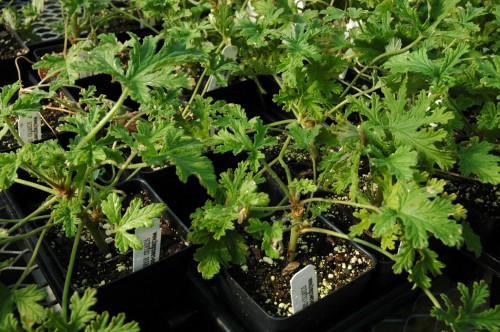
Growing Scented Geraniums is easy if you give them lots of sun and adequate water.
Scented Geraniums can be germinated from seeds or propagated from stem cuttings. When growing from seed, they typically germinate quickly, sprouting in a mere few days to a few weeks. Keep the seedlings out of direct sunlight as they will not grow if the soil is warmer than 75 degrees. From trial and error, it seems that plants started from seed rather than propagation tend to be stronger, and resist disease and cold temperatures better. After planting, you should see blooms twelve to sixteen weeks after the seeds are sown. If propagating from cuttings, make sure to start in early fall, and to cut four to six inches from a healthy, mature plant just below where leaves or nodes are growing. Taking a large enough cutting, typically containing three to four leaves, should be a big enough piece that should stand any stress from the transplanting process. Also, once the new plant has established a root anchor and is beginning to mature, be wary when pruning. Pinch the growth tips back by mid-February or the beautiful blooming clusters will be postponed in flowering.

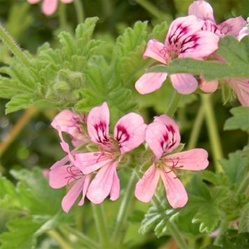
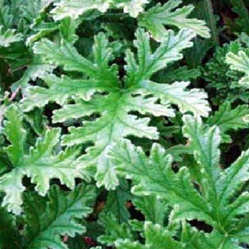
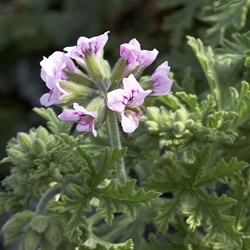
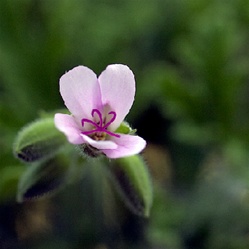
Looking to purchase scented geranium cuttings by the tray. Please advise if you would be able to assist with this request. Much appreciated, Cindy Leadbeater